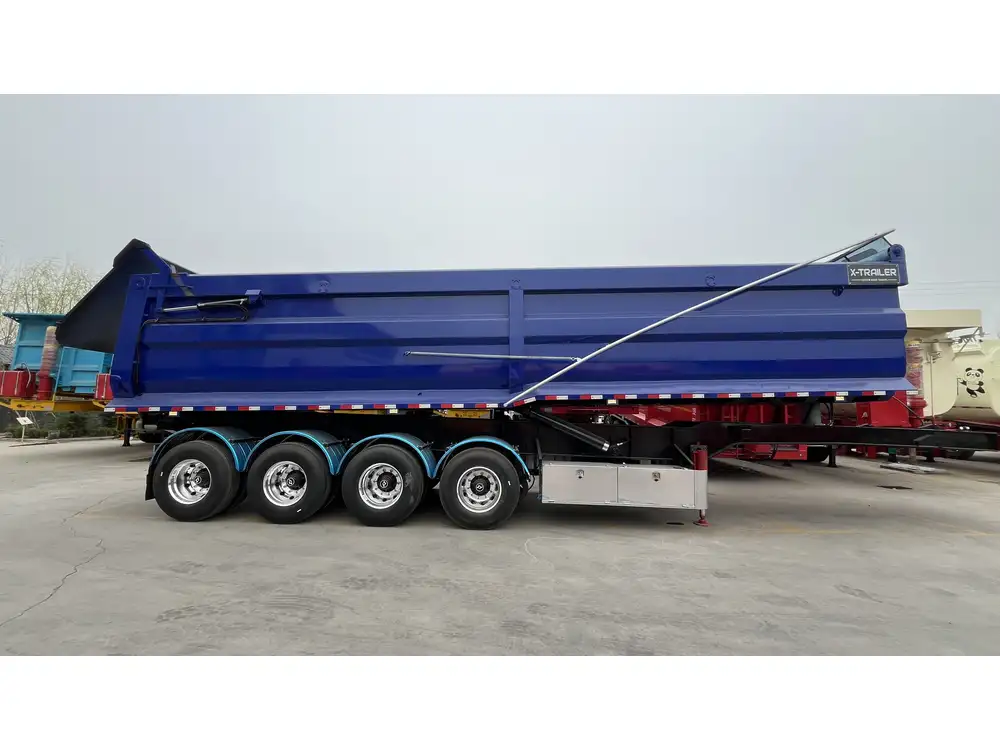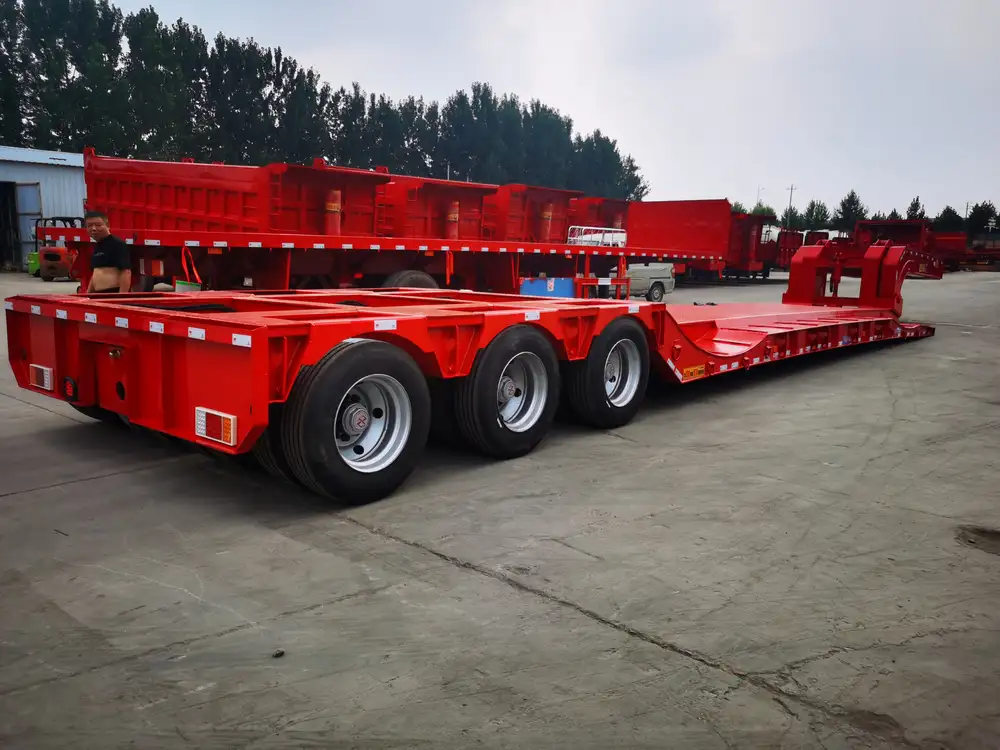Driving a semi-trailer truck is not merely a task; it is a skill that embodies both art and science. The vastness of the open road offers both freedom and responsibility, and knowing how to handle these large vehicles can ensure safe travel for yourself and others. This extensive guide will equip you with the essential knowledge, techniques, and insights necessary to drive a semi-trailer truck effectively and confidently. Let us delve deeply into the critical elements of semi-trailer trucking.
Understanding the Basics of a Semi-Trailer Truck
What is a Semi-Trailer Truck?
A semi-trailer truck, also known as an articulated truck, consists of a tractor unit (the front part) and a trailer (the rear part). The tractor unit is equipped with a powerful engine, while the trailer often lacks a front axle, resting on the tractor unit, which provides better maneuverability.
| Component | Description |
|---|---|
| Tractor Unit | The powerful front part that includes the engine, cab, and controls. |
| Trailer | The rear part designed to carry cargo, often customizable for specific needs. |
| Coupling | The mechanism that connects the trailer to the tractor, allowing the two units to pivot independently. |

Key Terminology
- Gross Vehicle Weight Rating (GVWR): The maximum weight a vehicle can carry, including its own weight and the load.
- Fifth Wheel: The coupling device that secures the trailer to the tractor.
- Blind Spot: The areas around the truck that cannot be seen through mirrors.
Preparing to Drive a Semi-Trailer Truck
Essential Requirements
Before setting out on the road, adhere to the following:
- Obtain a Commercial Driver’s License (CDL): Ensure you meet all local and federal regulations, and pass the written and practical tests.
- Pre-trip Inspection: Conduct a thorough inspection of the truck and trailer, including checking brakes, tires, lights, and coupling devices.
### Pre-trip Inspection Checklist
1. **Brakes**: Check service, emergency, and parking brakes.
2. **Tires**: Inspect for proper inflation and tread depth.
3. **Lights**: Ensure all lights are functioning, including turn signals and brake lights.
4. **Oil & Fluids**: Check the engine oil, coolant, brake fluid, and transmission fluid levels.
5. **Load Securement**: Ensure your cargo is appropriately secured to prevent shifting during transit.
Mental and Physical Preparation
Driving a semi-trailer requires a combination of focus and stamina. Here are some tips:
- Stay Hydrated: Drink plenty of water but manage your caffeine intake to avoid jitters.
- Rest Well: Get sufficient sleep before driving to ensure your alertness and reflexes are sharp.
- Mindfulness and Focus: Practice mindfulness techniques to maintain focus and reduce stress on the road.
Techniques for Driving a Semi-Trailer Truck
Loss of Control: Understanding the Physics at Play
Driving a semi-trailer truck is complex due to its length and weight. Key elements to consider include:
Turning Radius: Be aware of the larger turning radius compared to regular vehicles. This necessitates planning turns well in advance to avoid encroaching on other lanes.
Weight Distribution: Ensure even weight distribution across the axle to maintain stability, particularly when navigating hills or curves.

Mastering Speed and Braking
Speed management is fundamental when driving a semi-trailer. Here’s how to perfect this skill:
Approach Turns at Adequate Speed: Decrease your speed before entering a turn to maintain traction and control.
Engine Braking: Utilize engine braking by downshifting before a stop, which helps control your speed without overusing the service brakes.
### Braking Techniques
- **Controlled Stopping**: Gradually press the brake pedal; avoid sudden stops unless necessary.
- **Using Engine Brakes**: Helps reduce wear on brake components and provides better control on descents.Navigating Dangerous Situations
Every driver encounters unpredictable situations. Here’s how to prepare for them:
Road Conditions: Adjust driving style according to rain, ice, or snow; increase following distance to allow for longer stopping times.
Emergency Maneuvers: Familiarize yourself with emergency braking techniques and plan escape routes in case of obstacles.
Safety Protocols and Regulations

Fleet Safety Management
Safety should always be a top priority. Implementing a robust safety policy can minimize risks:
Regular Training: Continuous education on safety practices and accident prevention techniques is vital.
Incident Reporting: Encourage transparency in logging accidents or near-misses to create awareness among drivers.
Compliance with Regulations
Adhering to the Federal Motor Carrier Safety Administration (FMCSA) regulations is essential for legal compliance. Key regulations include:
| Regulation | Description |
|---|---|
| Hours of Service (HOS) | Limits on driving hours to prevent fatigue. |
| Electronic Logging Devices | Requirements for tracking driving hours and rest breaks. |
| Vehicle Maintenance Standards | Guidelines for maintaining vehicles to ensure safety. |
Fuel Efficiency Tips
Driving a semi-trailer truck can be fuel-intensive. Here are effective strategies to enhance fuel efficiency:
Smooth Accelerations and Decelerations: Avoid rapid accelerations and hard braking; these actions can waste fuel.
Optimal Speed: Maintain a consistent speed to optimize fuel consumption. Generally, 55-65 mph is ideal for most heavy trucks.

Monitoring Fuel Consumption
Utilize technology to track fuel consumption and identify improvement areas:
Telematics Systems: Implement systems that provide real-time data on driving patterns and fuel usage.
Trip Planning: Optimize routes to reduce idling time and consequent fuel wastage.
Handling Difficult Situations on the Road
Adverse Weather Conditions
Driving in adverse weather demands attentiveness and caution:
Rain and Wet Roads: Reduce speed and increase following distances to avoid hydroplaning.
Snow and Ice: Utilize tire chains when necessary, and understand how to navigate slippery surfaces effectively.

Dealing with Other Road Users
Interactions with other drivers can impact road safety:
Sharing the Road: Be extra cautious around pedestrians, cyclists, and smaller vehicles.
Using Turn Signals: Always use signals well in advance to inform other drivers of your intentions.
Roadside Emergencies
In the event of a roadside emergency:
Stay Calm: Pull over safely, turn on your hazard lights, and assess your situation.
Emergency Kit: Always keep an emergency kit on board, including flares, first aid supplies, and basic tools.
Additional Resources for Semi-Trailer Operators

Communities and Forums
Engagement with fellow drivers can inspire learning:
Online Forums: Platforms like Reddit and trucking-specific communities provide spaces for sharing experiences and advice.
Local Driving Clubs: Consider joining local or regional clubs for networking opportunities.
Professional Organizations
Many organizations offer resources, training, and advocacy:
American Trucking Associations (ATA): Provides industry insights, legislative advocacy, and professional development resources.
Truckload Carriers Association (TCA): Focuses on improving safety and efficiency in truckload transportation.
Conclusion: Embrace the Journey
Driving a semi-trailer truck involves a wide array of skills, knowledge, and awareness. From mastering the mechanics of handling a large vehicle to recognizing regulatory compliance, every aspect plays a crucial role in ensuring safety and efficiency on the roads. As you embark on this journey, remain committed to education, training, and safety awareness, turning every mile into an opportunity for growth and learning. By embracing these practices and principles, we become not just drivers but stewards of the road.
Whether you are a novice or a seasoned driver, continuing to evolve with the industry will prepare you for whatever challenges the highway may present. Drive safe, and may your journey be ever enlightening!



